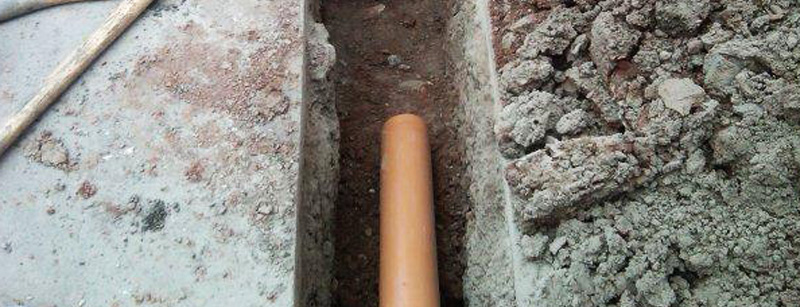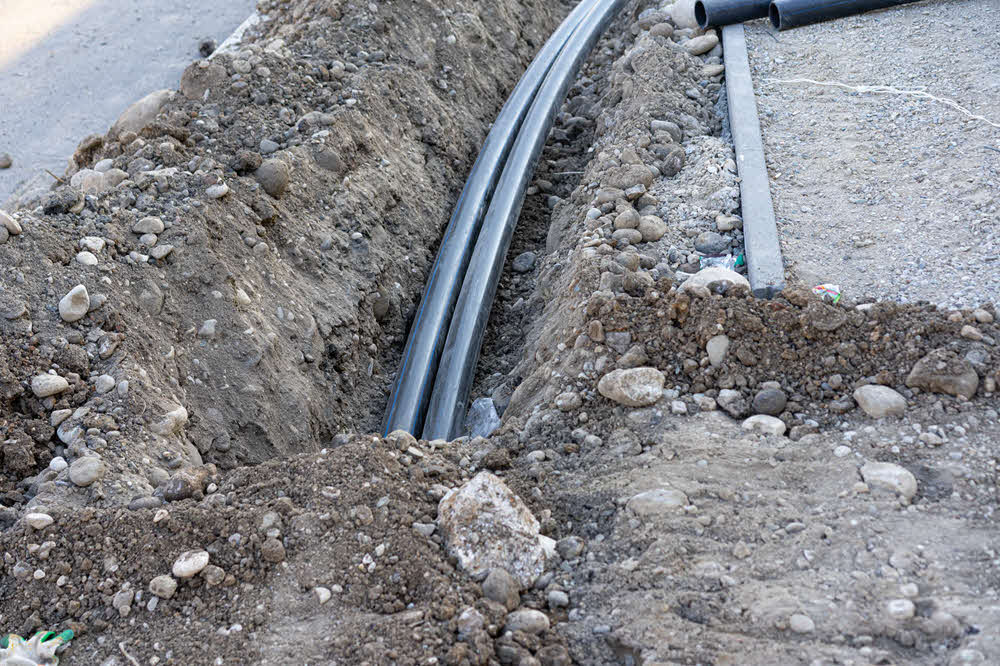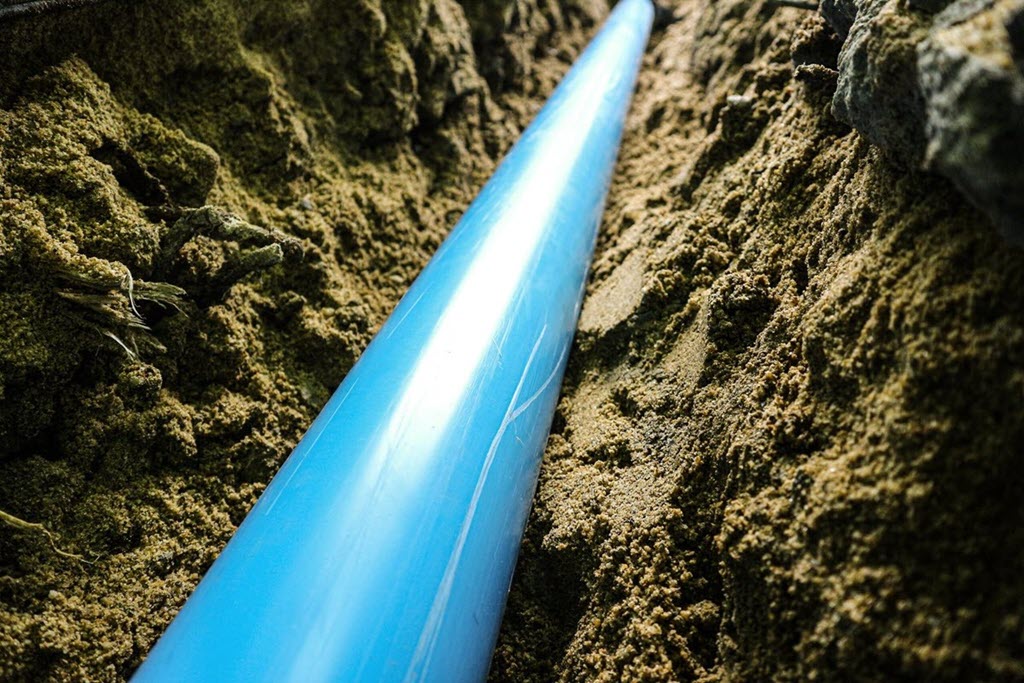Pipe Laying Servicesin Rochester MI
Pipe Laying Services to Support Efficient Infrastructure Development
We Are Locally Owned & Operated For Over 37 Years
Contact Us Today!
We Serve Businesses In And Around The Following Cities:
About Pipe Laying Services
The Significance of Professional Pipe Laying in Rochester’s Commercial Landscape
The city of Rochester, with its bustling commercial spaces, necessitates a robust and efficient pipe laying network to sustain its growth. An efficient pipe system is not only fundamental to the flawless operation of commercial properties but also essential in ensuring the safety and well-being of the city’s occupants. Being a complex specialty task, pipe laying requires precision, attention to detail, and professional expertise like that offered by D&J Contracting. As we delve deeper into this discussion, we will explore the intricacies of pipelaying, shedding light on the process and outlining its real-world applications and benefits in the commercial landscape of Rochester.
The Art of Pipe Laying: Understanding the Process
In the sprawling commercial complexes of Rochester, pipelaying becomes a critical task that requires meticulous planning and faultless execution. The process begins with site assessment and planning, which includes choosing the right type of pipes, such as PVC storm water pipe for rainwater or an underground gas pipe for a propane line. A competent service provider like D&J Contracting comprehends the significance of meticulous planning to ensure the underground sewer pipe installation or storm drain pipe installation is done professionally.
Following this, the excavation process begins, marking the onset of running gas or water lines underground. The soil conditions and the site’s geographical features influence the depth and direction of these trenches. Once excavation concludes, the next step is actual pipe installation, which may involve laying a drain pipe for rainwater or running a propane line underground. After laying the pipes, testing for leaks and accurate fluid transmission is performed. Backfilling the excavation then completes the process.
Real-world Applications: Making Rochester’s Commercial Sector Tick
Pipe laying plays a significant role in various aspects of Rochester’s commercial sector. Be it for routing freshwater to commercial facilities or managing the outflow of rainwater via a storm water drain pipe, professional pipelaying services like D&J Contracting are indispensable. Likewise, underground sewer pipe installation ensures sanitary conditions on these commercial properties by effectively managing waste.
Running gas pipe underground is another crucial application. This application ensures that commercial establishments, particularly those requiring propane for heating or other utility purposes, have a secure and efficient gas supply system. Through the quality and precision that D&J Contracting brings to pipelaying projects, these real-world applications contribute significantly to Rochester’s thriving commercial spaces.
Moreover, pipelaying is also an essential element in the construction and maintenance of public facilities in Rochester. Underground storm pipes, for instance, amount to a critical component of the city’s infrastructure, managing stormwater runoff and mitigating flooding risks.
The Benefits: More than Meets the Eye
The benefits of professional pipelaying are multifaceted, making it an essential service for Rochester’s commercial properties. Besides facilitating essential utilities, proper installation of underground sewer and storm water pipes ensures environmental safety and hygiene. Efficient pipelaying reduces the risk of pipe failures, leakages, and consequentially, any likely hazards or disruptions to commercial activities.
Professional pipe laying also contributes to economic efficiency. By ensuring accurate installation and minimizing incidents of pipe damages, businesses save considerable resources that would have otherwise been spent on frequent repair and maintenance. Businesses also benefit from the service reliability that quality pipelaying services like those offered by D&J Contracting provide. With an efficient pipe network, commercial establishments can focus on their core operational activities without worrying about utility interruptions.
In a sustainable perspective, by appropriately managing stormwater runoff and controlling sewerage systems, professional pipelaying contributes substantially to eco-friendly practices. Therefore, the process supports the city’s environmental commitments while boosting its commercial viability.
Trusting D&J Contracting: The Experts in Pipe Laying
The process and benefits underscored the pivotal role of skilled experts like D&J Contracting in efficient pipelaying. With their commitment to providing quality services and adherence to professional guidelines, they ensure absolute correctness in laying the lifeblood of Rochester’s commercial district – its pipe network. This commitment makes them a reliable fixture in Rochester’s commercial landscape.
The quality of pipelaying directly influences your commercial success, the safety of your establishment, and your contribution to the city’s well-being. All these aspects make it imperative to trust only the experts in pipelaying. Investing in a prestigious and trustworthy provider like D&J Contracting saves time, money, and uncertainty in the long run. Their dedication to execute perfect installations ensures the seamless operation of your commercial establishment, setting the ground for your promising journey in Rochester’s vibrant commercial landscape.
As our journey exploring the intricacies of pipelaying in Rochester concludes, we hope you have gained critical insights into making well-informed decisions. Recognizing the importance of professional pipelaying and trusting industry leaders such as D&J Contracting, you are one step closer to marking your space in the exciting commercial sector of Rochester.
Pipe Laying Services Gallery


Call Us Today to receive your Free Quote for
Pipe Laying in Rochester
Serving: Rochester, Michigan

About Rochester, Michigan
The Odawa, Ojibwe, Potawatomi and Wyandot peoples all resided in the Rochester area. All of them ceded land claims by the early 19th century. The first settlers in what would become Rochester, the Graham family, built a log cabin in 1817. The cabin was located on present-day 3rd St., just west of Main. The city was named for Rochester, New York, just like Rochester, Minnesota, as many early settlers to the area were formerly from the state of New York.
The city became an industrial center with abundant water power from the Clinton River and Paint Creek. The interconnected waterways are no longer used for travel or local industry, but provide natural beauty, some fishing, and a healthy portion of the Clinton Watershed. Historically, past industries formerly located in Rochester included a refinery for sugar beets, a paper products company, and the Western Knitting Mills factory, which was later adapted and utilized during World War II for incendiary production—businesses that no longer exist in the area. Rochester was served by two railroads as well as the Detroit United Railway, an interurban to Royal Oak and Detroit.
Chapman Mill Pond, east of downtown, disappeared into the Paint Creek when the dam broke during the flood of 1946. The reclaimed land is the site of the current post office, Rochester Hills library, and Olde Towne Road. Water Street, formerly situated at the edge of the large pond, remains by its name a reminder of the pond’s former existence.
Michigan became the 26th state in 1837, and the Village of Rochester was formed on April 12, 1869, within the boundaries of Avon Township. By 1895, Rochester’s population was 900. The village became the city of Rochester in 1967, breaking away from Avon Township. Avon Township became the City of Rochester Hills in 1984, following a long court battle, where the city of Rochester annexed 2.2 square miles (5.7 km) of Avon Township’s land. It more than doubled the city of Rochester’s size.
According to the United States Census Bureau, the city has a total area of 3.82 square miles (9.89 km), all land.
Since an annexation of a section of Avon Township (now Rochester Hills), the city has an eastern boundary that extends to the border with Macomb County.
| Census | Pop. | Note | %± |
|---|---|---|---|
| 1880 | 996 | — | |
| 1890 | 900 | −9.6% | |
| 1900 | 1,535 | 70.6% | |
| 1910 | 1,516 | −1.2% | |
| 1920 | 2,549 | 68.1% | |
| 1930 | 3,554 | 39.4% | |
| 1940 | 3,759 | 5.8% | |
| 1950 | 4,279 | 13.8% | |
| 1960 | 5,431 | 26.9% | |
| 1970 | 7,054 | 29.9% | |
| 1980 | 7,203 | 2.1% | |
| 1990 | 7,130 | −1.0% | |
| 2000 | 10,467 | 46.8% | |
| 2010 | 12,711 | 21.4% | |
| 2020 | 13,035 | 2.5% | |
| U.S. Decennial Census | |||
As of 2000 the median income for a household in the city was $65,179, and the median income for a family was $92,078. Males had a median income of $62,486 versus $37,107 for females. The per capita income for the city was $36,989. About 0.6% of families and 2.7% of the population were below the poverty line, including 1.0% of those under age 18 and 5.9% of those age 65 or over.
As of the census of 2010, there were 12,711 people, 5,514 households, and 3,195 families residing in the city. The population density was 3,318.8 inhabitants per square mile (1,281.4/km). There were 5,994 housing units at an average density of 1,565.0 per square mile (604.2/km). The racial makeup of the city was 88.6% White, 3.7% African American, 0.2% Native American, 5.5% Asian, 0.6% from other races, and 1.5% from two or more races. Hispanic or Latino of any race were 2.7% of the population.
There were 5,514 households, of which 30.9% had children under the age of 18 living with them, 47.3% were married couples living together, 7.7% had a female householder with no husband present, 2.9% had a male householder with no wife present, and 42.1% were non-families. 35.5% of all households were made up of individuals, and 8.8% had someone living alone who was 65 years of age or older. The average household size was 2.31 and the average family size was 3.09.
The median age in the city was 38.3 years. 25.1% of residents were under the age of 18; 7.6% were between the ages of 18 and 24; 29.4% were from 25 to 44; 26.4% were from 45 to 64; and 11.5% were 65 years of age or older. The gender makeup of the city was 48.0% male and 52.0% female.
The city of Rochester is governed by a seven-member city council and its mayor. City policy is then administered by a full-time city manager. The government provides full city services, including police, fire and water/sewer services, similar to many other communities in north Oakland County.
The city contracts with neighboring Rochester Hills for public library services for the city’s residents.
Rochester is served by Rochester Community Schools, whose boundaries completely encompass the city. A majority of the residents are zoned to Stoney Creek High School, with a small part of the west side of the city instead zoned to Rochester High School. Both high schools are located in Rochester Hills.
Oakland University, while geographically split between the cities of Rochester Hills and Auburn Hills, has maintained a Rochester mailing address since its inception in 1958. The main campus buildings are located in the nearby but not adjacent city of Auburn Hills.
Call Us Today to receive your Free Quote for
Pipe Laying in Rochester
Related Services in Rochester, Michigan
We Serve Businesses In The Following Zip Codes:
48007, 48015, 48021, 48026, 48035, 48036, 48038, 48042, 48043, 48044, 48045, 48046, 48047, 48048, 48050, 48051, 48066, 48071, 48080, 48081, 48082, 48083, 48084, 48085, 48088, 48089, 48090, 48091, 48092, 48093, 48098, 48099, 48225, 48230, 48236, 48310, 48311, 48312, 48313, 48314, 48315, 48316, 48317, 48318, 48397